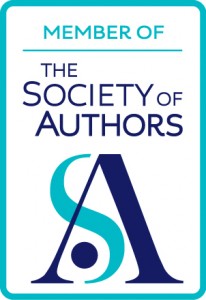 Julia Bacausa AD 370, Virunum, Roman Noricum
Julia Bacausa, passionate daughter of a local Celtic ruler, miserable and tense after a failed marriage and only half-divorced, can see no future life for herself.
Lucius Apulius, a bright young military tribune thrown out of a prestigious command that would have made his career. He’s posted to a backwater in the mountains of Noricum (Where? Even the tribune asks that).
We ‘met’ Julia and Apulius briefly in The Girl from the Market but this was a mere dip into the late fourth century. Now I’m writing their full story. So who are they?
Lucius Apulius
In his mid twenties, the son of an old senatorial family. Even though it’s late in the Roman Empire, he’s still trying to follow the cursus honorum, the sequential order of military and public administration posts to be held by aspiring politicians in the Roman Republic and the early Roman Empire. However, by the late fourth century, many traditional offices had been replaced by more pragmatic, administrative ones. But for now Apulius is making a success of his military career.
in fact, he’s a rising star on Count Theodosius’s staff, taking part in restoring order in Britannia and as a reward promised his own command in Western Britain – a big step for an ambitious tribune. But…
(You knew there was a ‘but’.)
[Apulius speaks] I’d been curious to see Dulcitius in person. Said to be an excellent soldier and a commander with a hard reputation, he’d been thrown out of the army by the late Emperor Julian. Why had Count Theodosius summoned him back? Dulcitius scanned the tent with his dark flashing eyes, nodding at two of the other officers. Then he stopped at me.
‘Aren’t you General Apulius’s son?’ Dulcitius growled and jabbed his finger at me. ‘That pagan who crawled away from Samarra after Julian the Apostate’s death?’
The whole tent fell silent. Count Theodosius looked up from his dispatch. A secretary shuffled scrolls in the background. And all eyes focused on me. Christian eyes.
 Lucius Apulius ‘What exactly are you saying, Dulcitius?’ The count leaned back in this chair.
‘He’s from one of those useless aristo families that Diocletian chucked out.’
‘Maybe so, but he’s one of my most promising juniors who’s led several very successful sorties.’ The count turned to me. ‘Lucius?’
‘Sir, I’ve served the emperor for six years to the utmost of my ability, and completely loyally.’ I burned inside with fury at the new dux, but kept my eyes on Theodosius.
‘Ask him who he worships.’ Dulcitius looked at me malevolently.
Ah, problem. Even the careers of even the best were destroyed for not following the late empire’e official religion – Christianity – which is how Apulius ends up in a backwater like Noricum. He was lucky to still have a military job, even the second in command of a local auxiliary force.
Julia Bacausa
Just twenty, daughter of a local Celtic leader and a mother ‘from the tribes’, fiery in appearance with flaming red hair and independent in nature. Hurt and disappointed by a failed marriage with the local bishop’s nephew, she is caught in the religious transition of the time and by her half-divorced status. Apulius first sees her when she’s not at her best – she’s been supervising a through household overhaul and had thrown on an old tunic that morning.
[Apulius speaks] Another bloody provincial semi-barbarian with a plait of red hair. She wore no jewellery; her belt was plain leather without a waist pouch and her tunic didn’t even cover her feet and ankles. A pert farm girl, or somebody’s household slave who had the nerve to measure me up like an equal. But she was worth looking at, I had to admit.
[Julia speaks after exchanging harsh words with him] I knew I’d been rude, but he could at least stop and let me apologise. He didn’t need to be so uncivil, even for a soldier. I hastened after him determined to make him hear me. Nobody turns his back and walks away from me.
When I caught up with him, I stretched my hand out and seized his arm. He instantly grabbed his sword pommel. The gladius was halfway out of the scabbard by the time he saw it was me. He released it, then looked as my hand on his forearm as if it were a viper about to bite.
‘How dare you touch me! Remove your hand or I’ll have you whipped.’ He looked at me as if I were the meanest drudge.
‘You can’t,’ I retorted. ‘You have no right.’
‘We’ll see about that.’ He went to raise his hand – to summon some of his men, I supposed – then he let his hand drop. His eyes gleamed and he looked down his Roman nose.
I caught my breath and tipped my chin up at him. I knew my face was flushed – I could feel the heat – but I was going to teach him a lesson. When he found out who he had insulted he’d be broken and sent back to Rome in disgrace. I opened my mouth to tell him exactly what his fate was going to be, but he prised my fingers off his arm. The hard skin on his hand chafed my softer one. My fingers were jammed together and started tingling. Before I could protest, he grabbed my wrist and pulled me to him. Gods, he was strong, vital. His arm slid round the back of my waist and he crushed me against his body. Solid, hard and unyielding. He smelt of horse, a day’s sweat and pine resin. His eyes narrowed then gleamed. His breath shortened.
I should have struggled, but I didn’t want to. His other hand gripped my buttock. I stared into his eyes and was lost.
Then, of course, Apulius finds out who she really is and she seizes the opportunity to pay him back in full …
Writing two such uncompromising characters who nevertheless are sensitive human beings smarting from life’s unfairnesses is pure joy. Despite the mass of research needed, I think this book is going to be a whole lot of fun.
——-
Writing challenges so far:
Day 2: Introduce your work in progress
Day 1: Starting with revealing information
Alison Morton is the author of Roma Nova thrillers – INCEPTIO, PERFIDITAS, SUCCESSIO, AURELIA, INSURRECTIO and RETALIO. CARINA, a novella, and ROMA NOVA EXTRA, a collection of short stories, are now available. Audiobooks are available for four of the series. NEXUS, an Aurelia Mitela novella, is now out.
Find out more about Roma Nova, its origins, stories and heroines… Download ‘Welcome to Roma Nova’, a FREE eBook, as a thank you gift when you sign up to Alison’s monthly email newsletter. You’ll also be first to know about Roma Nova news and book progress before everybody else, and take part in giveaways.
If you enjoyed this post, do share it with your friends!Like this:Like Loading...
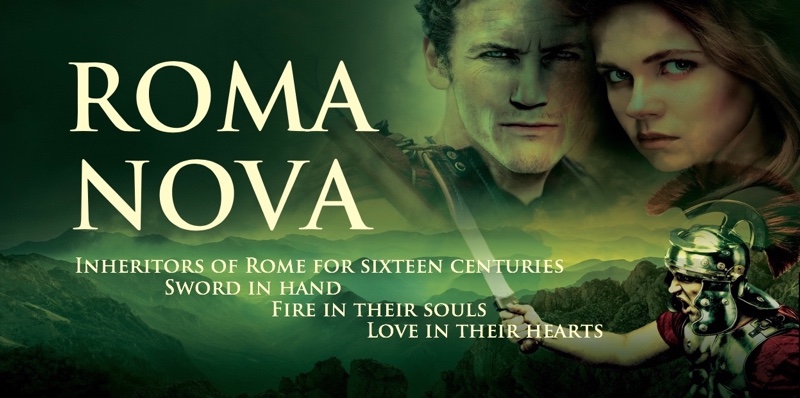
To be truthful, I have two projects on the go at present, but let’s not complicate life!
Now I’m going back in time to AD 370…
The Roma Nova series has two main strands: one with four books set in the 21st century featuring Carina Mitela and the other set between the late 1960s to early 1980s featuring Aurelia Mitela. The short story collection ROMA NOVA EXTRA includes a couple of stories about the foundation of Roma Nova – The Girl from the Market and Victory Speaks – but these were mere dips into the late fourth century.
Readers have been urging me to write about how Roma Nova started. Every country has a history and in the books so far the characters refer back to that history. We know founders Julia Bacausa and Lucius Apulius will survive – there would be no present day Roma Nova if they hadn’t – but the intrigue, I hope, is how and why they did what they did, whether they acted well or not, and what gains and sacrifices occurred. And what the consequences were for Aurelia’s and Carina’s generations.
As I write, I’m about 9,000 words in and I start with the bones of the story in The Girl from the Market, but from Julia’s point of view rather than Apulius’s. That’s an interesting challenge in itself! The other big challenge is all the research. I have a reasonable grounding in Ancient Roman life, but as we know, Rome in the West lasted 1229 years and by AD 370, it was rather different from the classical period of Augustus. And we’re in Roman Noricum, an important province but very different from the old urbs of Rome and the new capital of Constantinople. More of that on Day 4!
In the meantime, Day 3 will reveal more about those founders. Of course, there will be fireworks when they meet!
Back to Day 1: Introduce yourself On to Day 3: Meet main characters, Julia and Apulius
Alison Morton is the author of Roma Nova thrillers – INCEPTIO, PERFIDITAS, SUCCESSIO, AURELIA, INSURRECTIO and RETALIO. CARINA, a novella, and ROMA NOVA EXTRA, a collection of short stories, are now available. Audiobooks are available for four of the series. NEXUS, an Aurelia Mitela novella, is now out.
Find out more about Roma Nova, its origins, stories and heroines… Download ‘Welcome to Roma Nova’, a FREE eBook, as a thank you gift when you sign up to Alison’s monthly email newsletter. You’ll also be first to know about Roma Nova news and book progress before everybody else, and take part in giveaways.
If you enjoyed this post, do share it with your friends!Like this:Like Loading...
A writing friend of mine, Jennifer C Wilson, has given me a challenge. Well, not directly, but an idea.
Every day in August, she’s been doing posts on aspects of writing. Now, I can’t guarantee to keep that up, but I’m going to have a go. I would LOVE to have your comments on these mini-posts so please do join in where and when you’d like.
Day 1: Introduce yourself
Ha! Well, here’s the ‘official bio’. (Click on the headings for further info and full links – you don’t want me spattering them on every line.)
—————-
Alison Morton writes the award-winning Roma Nova thriller series featuring tough, but compassionate heroines. She blends her deep love of Roman history with six years’ military service and a life of reading crime, adventure and thriller fiction. On the way, she collected a BA in modern languages and an MA in history.
All six full-length Roma Nova novels have won the BRAG Medallion, the prestigious award for indie fiction. SUCCESSIO, AURELIA and INSURRECTIO were selected as Historical Novel Society’s Indie Editor’s Choices. AURELIA was a finalist in the 2016 HNS Indie Award. The Bookseller selected SUCCESSIO as Editor’s Choice in its inaugural indie review.
A ‘Roman nut’ since age 11, Alison misspent decades clambering over Roman sites throughout Europe. Fascinated by the mosaics at Ampurias (Spain), at their creation by the complex, power and value-driven Roman civilisation, she started wondering what a modern Roman society would be like if run by strong women…
Now she continues to write thrillers, cultivates a Roman herb garden and drinks wine in France with her husband.
Works
The Carina strand
INCEPTIO where New Yorker Karen Brown is thrown into a new life in mysterious Roma Nova and fights to stay alive with a killer hunting her
CARINA, a novella, Carina’s first mission abroad. What could go wrong?
PERFIDITAS, six years on, where betrayal and rebellion are in the air, threatening to topple Roma Nova and ruin Carina’s life.
SUCCESSIO, where a mistake from the past threatens to destroy the next generation.
The Aurelia strand
AURELIA, in late 1960s Roma Nova, Aurelia Mitela battles her life-long nemesis, silver smuggling and is forced to choose between her love, her child and her country
NEXUS Mid 1970s, London, where a simple favour for a friend becomes a chilling pursuit across Europe
INSURRECTIO, where Aurelia Mitela struggles against a manipulative tyrant grabbing power. But it may already be too late to save Roma Nova…
RETALIO, a classic tale of resistance and retribution – the endgame between Aurelia and Caius
Extras
ROMA NOVA EXTRA, a collection of short stories from AD 370 to the present

Contributions
‘A Roman Intervenes‘ in 1066 Turned Upside Down
How Galla Mitela, Roma Novan imperial councillor, attempts to stop the Norman invasion of England. One of a series of possible alternative outcomes of 1066.
‘The Mystery of Victory’ in Rubicon (HWA/Sharpe Books)
What did happen to the Altar of Victory in the dust of the Roman Empire?
Coming in November: The Idealist, in Betrayal, an anthology by the Historical Fictioneers, an international group of historical fiction writers. What exactly did happen in 1849 that now threatens to ruin, proscribe and exile Carina and the entire Mitela family?
Non Fiction
Military or civilians? The curious anomaly of the German Women’s Auxiliary Services during the Second World War.
The 500 Word Writing Buddy: 35 Inner Secrets for the New Writer
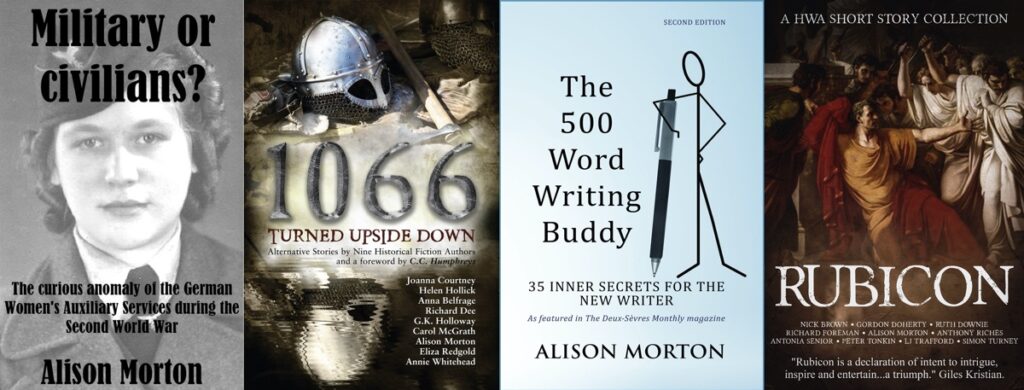
Audio
Four of the Roma Nova titles were sold to Audible Studios UK via Blake Friedmann Literary Agency (Agent – the late Carole Blake): INCEPTIO, PERFIDITAS, SUCCESSIO, AURELIA
Current work in progress
Double Identity, a modern conspiracy thriller – at final stage
FONDATIO (working title), set between 370 AD and 430 AD in Roman Noricum
A second thriller to follow Double Identity
Social media links
Connect with Alison on her Roma Nova site: https://alison-morton.com
Facebook author page: https://www.facebook.com/AlisonMortonAuthor
Twitter: https://twitter.com/alison_morton @alison_morton
Alison’s writing blog: https://alisonmortonauthor.com
Instagram: https://www.instagram.com/alisonmortonauthor/
Goodreads: https://www.goodreads.com/author/show/5783095.Alison_Morton
Alison’s Amazon page: http://Author.to/AlisonMortonAmazon
Newsletter sign-up: http://eepurl.com/ckNeFL
Memberships: International Thriller Writers, Historical Novel Society, Alliance of Independent Authors, Society of Authors, Romantic Novelists’ Association, Mystery People
Speaking and media participation
Alison gives talks/workshops/panels on writing, thriller writing, self-publishing, alternative and historical fiction and social media at international writers’ and genre conferences, tutorial groups and associations.
She has also written articles for Writing Magazine, appeared on local radio and has written a column on writing and publishing for The Deux-Sèvres Monthly, the local English language magazine since 2012.
Some friends and colleagues…
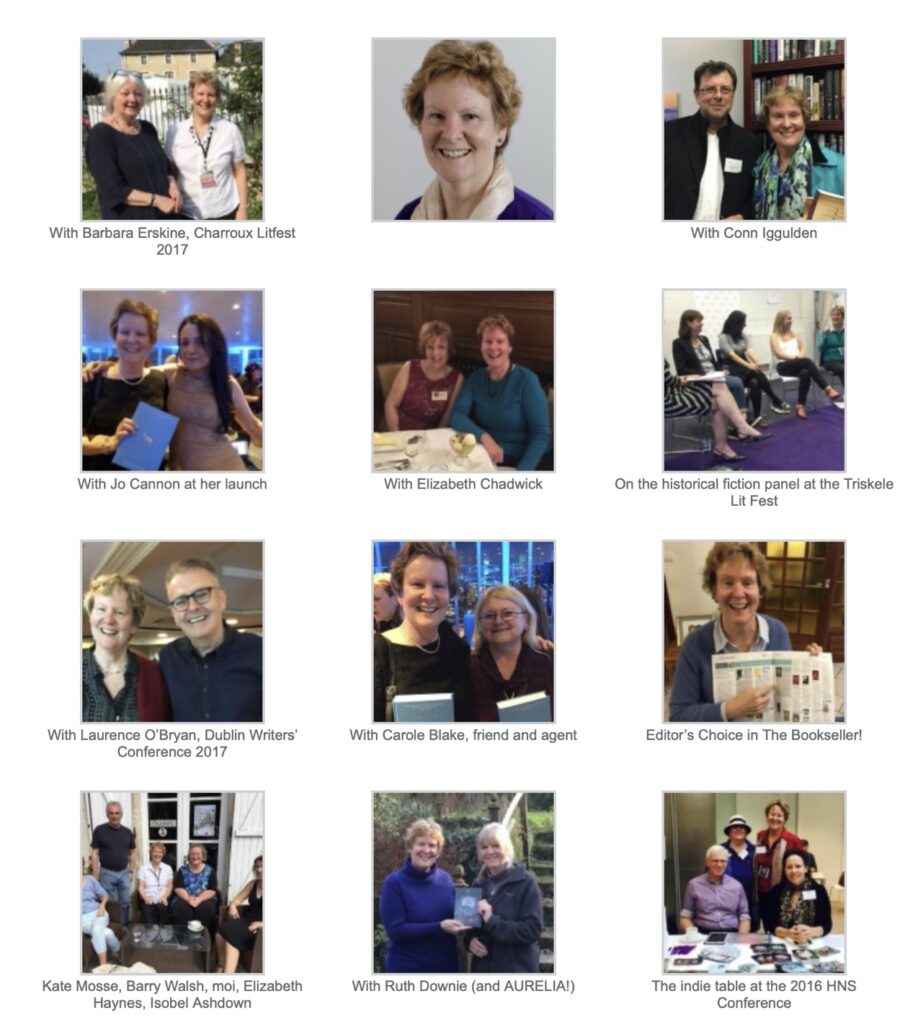
So that’s me!
Day 2 is about what I’m working on now…
Alison Morton is the author of Roma Nova thrillers – INCEPTIO, PERFIDITAS, SUCCESSIO, AURELIA, INSURRECTIO and RETALIO. CARINA, a novella, and ROMA NOVA EXTRA, a collection of short stories, are now available. Audiobooks are available for four of the series. NEXUS, an Aurelia Mitela novella, is now out.
Find out more about Roma Nova, its origins, stories and heroines… Download ‘Welcome to Roma Nova’, a FREE eBook, as a thank you gift when you sign up to Alison’s monthly email newsletter. You’ll also be first to know about Roma Nova news and book progress before everybody else, and take part in giveaways.
If you enjoyed this post, do share it with your friends!Like this:Like Loading...
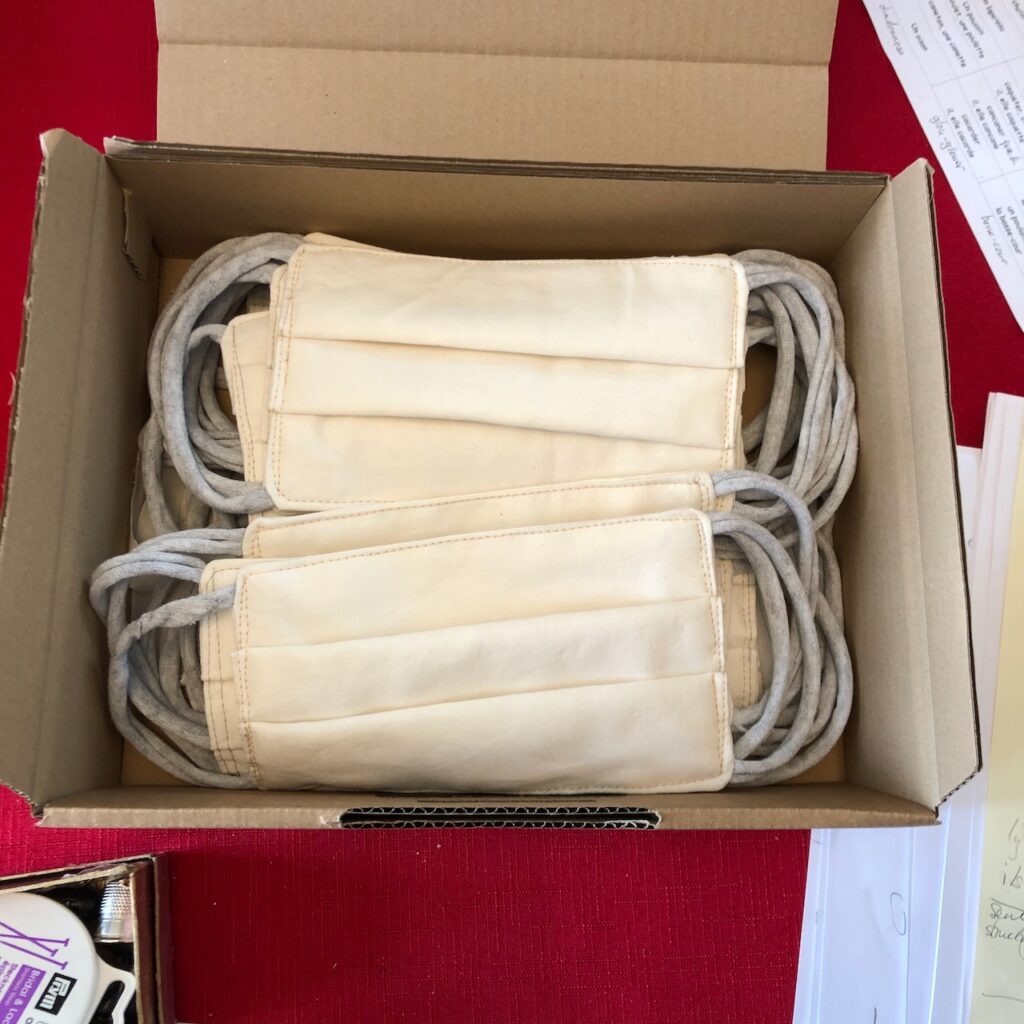 Quite a number of people have asked my about how I made the fabric masks for our family. In late April, I dug out my trusty Singer sewing machine and joined a community sewing project run by my local council here in France. Quite a number of people have asked my about how I made the fabric masks for our family. In late April, I dug out my trusty Singer sewing machine and joined a community sewing project run by my local council here in France.
After producing 100 masks for them from pre-cut materials to Lille University Hospital approved pattern, I reckoned I had learnt a new skill. So I made family ones from my materials box. I have a full suitcase of offcuts. 😉
Anyway, here are some guidelines that I developed. They’re not advice, but you you may find them helpful. There’s also a pdf version to download at the end.
——
Materials
Three layers are recommended.
Outer layer (1): I used a thick, close-woven soft furnishing fabric so I could be 100% sure the weave was tight. Yes, 400 thread Egyptian cotton sheeting would do the same, but you don’t want to cut up your best sheets!
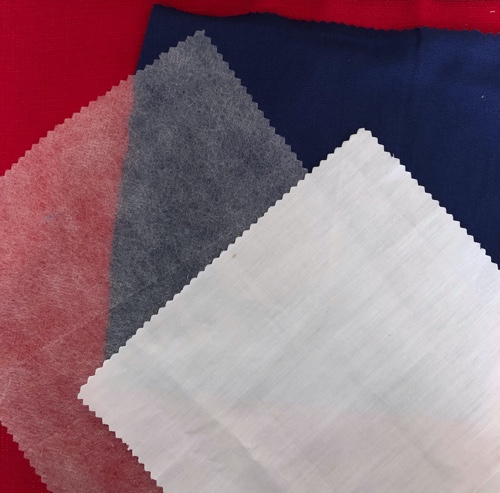 The choice of fabric is yours; the trick is to hold the fabric up to sunlight. If you can see through it without too much trouble, it’s not tightly woven enough. Linen is no use for this reason. The choice of fabric is yours; the trick is to hold the fabric up to sunlight. If you can see through it without too much trouble, it’s not tightly woven enough. Linen is no use for this reason.
Anything knitted is a no-no as it can stretch and open up the fabric which lets drops through.
Middle layer (2): Winter or horticultural fleece “non-woven (technically called spun bonded) polypropylene fleece”. Gardeners will know this is a thin membrane used to protect soft fruit and other delicate plants from harsh winter weather. It’s very light and not woven. It’s easily obtainable from garden centres or online.
Be warned: It comes in large sheets. Buy the smallest size you can get or club together with others. You only want a tiny quantity – 20 x 20cms for each mask.
Inner layer (3): something soft like cotton/poplin, ideally 100% cotton and again closely woven. Polycotton mix sheeting is okay – we do sleep on it much of the time. Avoid synthetic fabrics like nylon, acrylic, polyester, viscose; they’ll just make your skin hot and sweaty, and potentially blotchy.
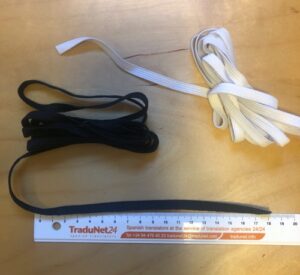
Elastic
You’ll need two 18cm lengths. Round elastic as on surgical masks is fine but can become uncomfortable after a while and it’s awkward to sew.
I prefer flat elastic – easier to sew and more comfortable.
Making your mask
 Cut a paper/card/greaseproof paper pattern square of 20 cm x 20 cm. Fold it in four both straight (into 4 squares) and diagonally (into 4 triangles) to make sure you have a proper straight sided 20 cm square. Cut a paper/card/greaseproof paper pattern square of 20 cm x 20 cm. Fold it in four both straight (into 4 squares) and diagonally (into 4 triangles) to make sure you have a proper straight sided 20 cm square.
Unfold and flatten out.
Using your 20 cm paper square as a pattern, cut out one of each layer 1, 2, and 3.
Place layer 3 (inner) on top of layer 2 (fleece), then layer 1 (outer) on top of layer 3 with right side of fabric face down. Pin together.
Sew three layers together along two opposite sides with about a 0.75cm-1cm hem; these will be the top and bottom of the mask.
Next, place the ear elastics each side, sliding each end about at 0.75cm-1cm in between layers 1 (outer) and 3 (inner) at points H in the diagram below.
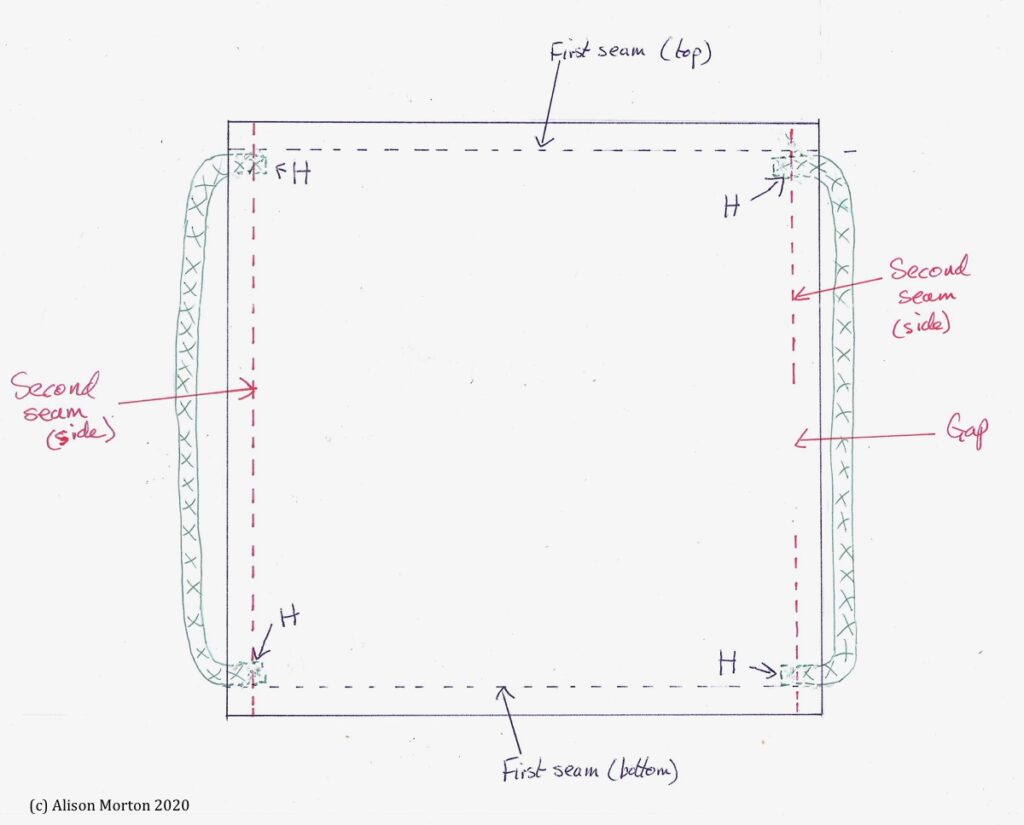
Sew down the whole of one side, sewing the elastics in place at the corners. You may have to manoeuvre the material as it goes through the machine so you don’t catch the elastic in the wrong place.
Sew down the opposite site, sewing the elastics in place at the corners, but leave a 5cm gap in the middle of that side.
 Tie all the loose ends off. You may also like to snip diagonally at the corner to get rid off excess fabric, but don’t cut into the sewn seams. Tie all the loose ends off. You may also like to snip diagonally at the corner to get rid off excess fabric, but don’t cut into the sewn seams.
Using the gap left in one side, turn the whole mask out. Pin the gap opening together and oversew the whole square with a border of about 0.2 cm from the edge (right).
Pleating
Three or four pleats are usual. These held keep the mask tight on your face at the sides when wearing. From the top, fold 2-3 cm over and pin. Repeat with the next 2-3 cm. See photo for finished effect. Once happy with the pleats, over sew down each side to fix pleats. Press with warm iron if you wish to (not compulsory!).
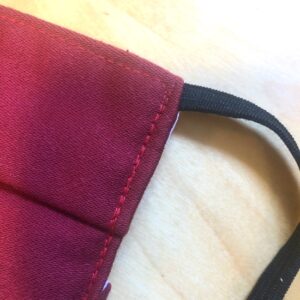
Washing
The recommendation is 60 minutes at 60 C, but I admit to soaking in hot tap water and washing machine liquid in a bowl for 30 minutes, then rinsing thoroughly, towel drying then drying in the sun or fresh air. This is not necessarily what you should do.
I do this after each use, e.g. a shopping trip or visit to doctor/library, etc., so would recommend making two masks per person.

And here’s the downloadable PDF including images
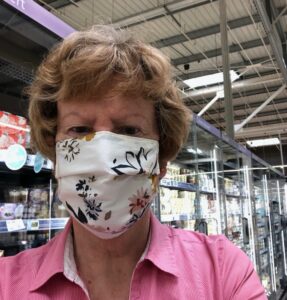
Stay safe and prosper!
When not sewing masks, Alison Morton is the author of Roma Nova thrillers – INCEPTIO, PERFIDITAS, SUCCESSIO, AURELIA, INSURRECTIO and RETALIO. CARINA, a novella, and ROMA NOVA EXTRA, a collection of short stories, are now available. Audiobooks are available for four of the series. NEXUS, an Aurelia Mitela novella, is now out.
Find out more about Roma Nova, its origins, stories and heroines… Download ‘Welcome to Roma Nova’, a FREE eBook, as a thank you gift when you sign up to Alison’s monthly email newsletter. You’ll also be first to know about Roma Nova news and book progress before everybody else, and take part in giveaways.
If you enjoyed this post, do share it with your friends!Like this:Like Loading...
 Viglen 1 desktop Do you use some your applications, programs or software occasionally and then forget how to do them?
I’ve used a computer since 1989. Yes, there was personal computing then. We bought a Viglen Plus, 640K RAM and 30Mb hard drive storage and a 360K disk drive which took 5¼” floppy disks. Heady stuff! These were the days of working in DOS and using keyboard commands. WordStar, SuperCalc and DBase were the programs of the day. You memorised a hundred commands to drive even the basic functions.
I still use Control C and Control V for copying and pasting. Actually, on my Mac it’s Cmd C and Cmd V, but they’re the same mental process and finger movements. Cmd A is great for highlighting all text and the fabulous Cmd Z (presumably based on ‘zap’) for undoing the last action.
Next, we saw dropdown menus in DOS. How decadent! And then along came graphical interfaces, such as Windows. We became spoilt. But the old-fashioned DOS users then had the option of digging around in the innards of the operating system if there was a serious problem and we learnt to systemise and file information properly on ‘trees’.
Enough nostalgia! Back to amnesia…
When I go back to iMovie to make or amend a video, usually a book trailer, I have to re-familiarise myself with its arcane mysteries. I admit, iMovie10 was wonderfully flexible with myriad options and tweak possibilities, but then iMovie11 hit and it was a horrible surprise. Many of the options and tweaks had vanished, but it was still as un-intuitive as before. Still, I wrestled with it and eventually worked out how to work in the new restricted environment. Then I didn’t make a book trailer for a year. Cue a day of frustration re-learning the blasted program.
But MS Word gives me the most grief as Microsoft insists on changing familiar commands or buttons every time they update. Like many writers, I use the Review function as does my editor and countless editors before her. When you finished, you used to click ‘Final’ and hey presto, the mark-up area at the right side disappeared.
In the current version 16.37 for Mac, there is no ‘Final’ option.
Cue ‘O Fortuna’ from Carmina Burana…

Now, I’m used to computing after thirty years and am reasonably good at researching, but it took ages to find the appropriate information and instructions to get rid of that wretched right hand column for ever. Or maybe I’m just slowing up…
My teeth gnashed at this on the above linked help page:
“Important: The only way to remove tracked changes is to accept or reject them, and the only way to remove comments is to delete them. Choosing the No Markup view only temporarily hides changes and comments, and will show up again the next time someone opens the document.”
Er, Microsoft, at this stage when we’ve finished edits or addressed all the comments, the only thing we want to do is produce a nice clean document, or copy document, that doesn’t have the blasted review column, especially if it’s empty. So ‘Final’ is the simplest option for doing this in one go.
Perhaps I enjoy the apocalyptic lure of a ‘Final’ button, but I would have fewer visits to the dentist if computer software designers would listen to the common or garden user.
Alison Morton is the author of Roma Nova thrillers – INCEPTIO, CARINA (novella), PERFIDITAS, SUCCESSIO, AURELIA, NEXUS (novella), INSURRECTIO and RETALIO, and ROMA NOVA EXTRA, a collection of short stories. Audiobooks are available for four of the series. Double Identity, a contemporary conspiracy, starts a new series of thrillers.
Find out more about Roma Nova, its origins, stories and heroines and taste world the latest contemporary thriller Double Identity… Download ‘Welcome to Alison Morton’s Thriller Worlds’, a FREE eBook, as a thank you gift when you sign up to Alison’s monthly email newsletter. You’ll also be among the first to know about news and book progress before everybody else, and take part in giveaways.
If you enjoyed this post, do share it with your friends!Like this:Like Loading...
|
Subscribe to Blog via Email
Join 368 other subscribers.
Categories
Archive
|






















